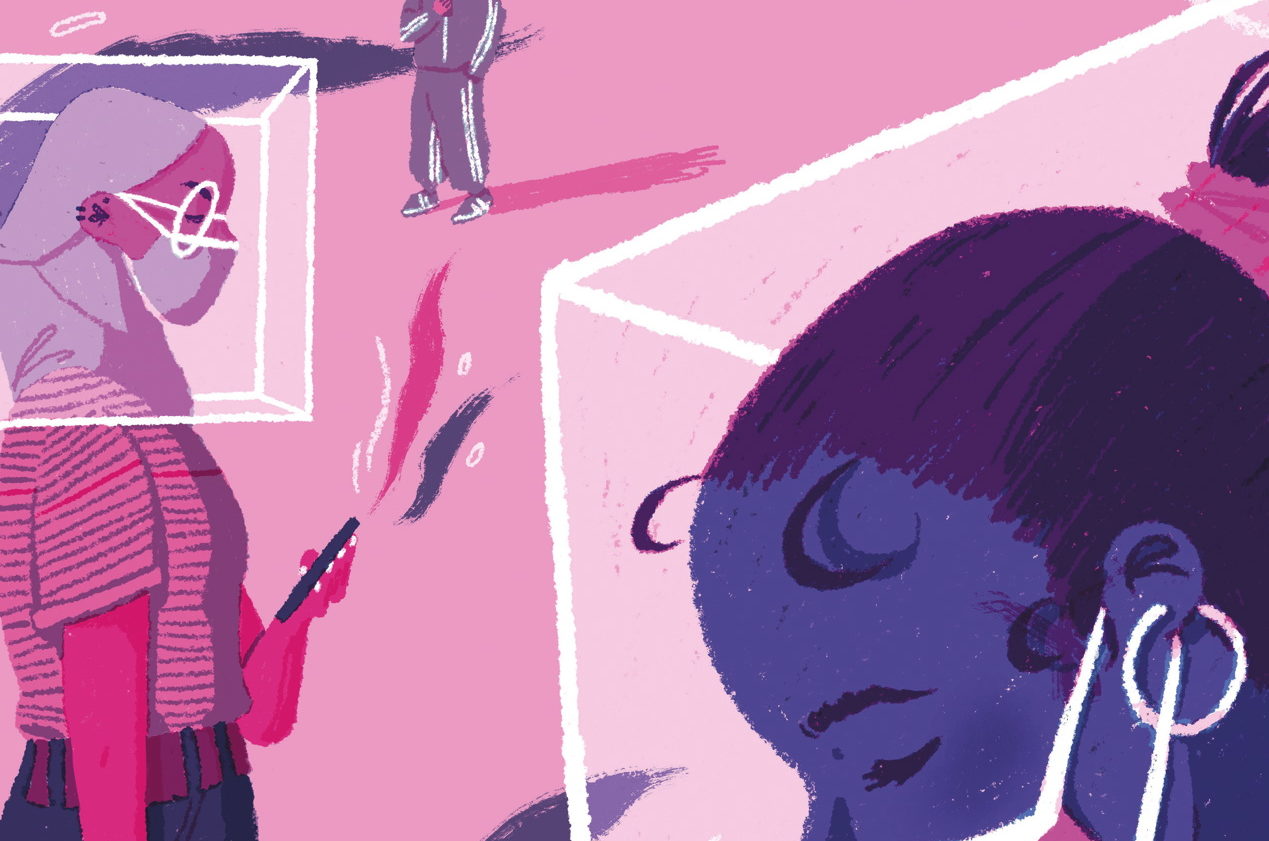Crystal clear
New corona-words, online chat and filling silences – linguist David Crystal has a conversation about conversation in the pandemic with Jamie Kenny
We’ve all spent the past few months hunkered down. But in addition to that, David Crystal has been collecting words. And why not? As Britain’s foremost linguist – and the author of over 120 popular and academic books on English as it is actually spoken – it’s a big part of what he does. The age of social distancing has provided him with a bumper crop.
“I’ve already heard ‘lockdown’ being used in other contexts,” he tells Big Issue North. “Such as locking a garden shed to make sure its contents are safe.
“People are adding ‘corona’ and ‘covid’ to other words – as in ‘coronacut’ for a self-made haircut and ‘covidodging’ for sudden movements made to avoid passers-by.
“And there have been several other clever creations such as ‘blursday’, for ‘what day is it?’, and ‘quarantedium.’
“We might even refer to these developments as a new dialect. I call it ‘covidese.’”
Let’s Talk, Crystal’s new book, was written before he was able to take advantage of these covidaptations to the common tongue. But Let’s Talk is less a book about words, and more a kind of style guide to conversation: how we do it, the rules we adopt, what they say about us and our relations with other people, the role it plays in helping us all just get along. “The aim of a conversation,” he writes, “is to make everyone feel happy or satisfied at the end of it”.
We may have emerged from strict lockdown into some indeterminate state of social distancing, but if the value of conversation is to convey togetherness and belonging, what happens when distance becomes the official rule? What do we lose?
“Rapport is certainly critical,” says Crystal. “But the conversations I’ve been involved with in recent weeks haven’t changed. Two metres isn’t such a big deal. It could be a problem for cultures where people’s comfortable speaking distance is very close – less than a metre – and they engage in a lot of touching; but this doesn’t apply in the UK, where people tend to stand or, in a sitting-room, sit at a distance of about a metre or more, and most aren’t touchy-feely.”
These days, people tend to mean it when they ask: “How are you?” But what comes next?
What we do lose from conversation in a time of social distance becomes clear when we try to replicate it virtually through applications like Skype and Zoom. Queen Victoria complained that prime ministers used to lecture her “as though she was a public meeting”. The Zoom conference call brings this experience to the masses.
“The crucial factor is the lack of simultaneous feedback, the listener vocalisations – mhm, yeah, huh? – body movements, and facial expressions that form an essential part of face-to-face conversation,” says Crystal. “Without these to give speakers a sense of how the interaction is going, they feel isolated and their speech alters as a consequence.
“But I think the main thing we lose is the relaxed nature of a traditional conversation. If we’re chatting, the participants can pause, take moments to reflect, not pay attention, or even stay silent for a while. Online, we are always on. Silences are anathema, and we have to maintain a high level of attention. It’s not surprising, then, that people often say they feel tired or exhausted after an online chat of any length.”
One problem with being stuck in the house during lockdown is missing the chance to chat with friends and colleagues. Another is being stuck in the house with the same people long after the sources
of conversation have dried up. These days, people tend to really mean it when they ask: “How are you?” But what comes next?
“It is a problem, as people in our culture do feel the need to talk when together. Not so in all cultures, where periods of mutual silence are valued – in Japan, for instance. The problem is not with casual conversation though. That by its nature is short-lived and superficial. The problem is how to fill the conversational space in lockdown over longer periods of time, such as during a meal or when sitting together and there’s nothing on the telly, and where we need to talk about stuff in greater depth.”
In Let’s Talk, Crystal portrays our constant acts of everyday communication as a multiplicity of individual threads that, although weak individually, collectively bind us together. After all, the way we define someone as sociable boils down to their ability to talk to others easily, whether loved ones, good mates, workplace colleagues or those people you met down the pub that night. Part of the disorienting effect of lockdown is the fact that most of these threads have been suddenly cut. When the vaccine arrives, can we just take up where we left off?
“It’s difficult to generalise” he says. “I know some who are perfectly happy without this wider contact, and some who hate it. This is where online rooms like Zoom have a real value, despite the above difficulties. Whether it’s a family, a cluster of school friends, a church community group, or whatever, the conversations I’ve observed or been a participant in have worked quite well. And it’s remarkable how quickly people have got used to the new medium, and learned to cope with the problems of time-lag, overlapping speech and so on. Many are finding they are conversing more now than they ever did.
“I suspect our post-Covid-19 society will be much more voluble.”
Let’s Talk by David Crystal is published by Oxford University Press
Image: Steph Coathupe

Leave a reply
Your email address will not be published.